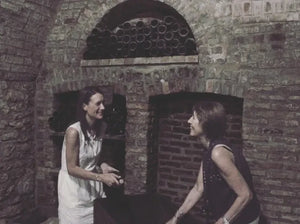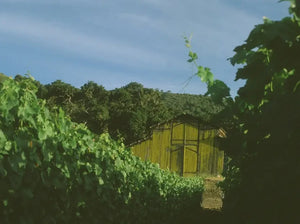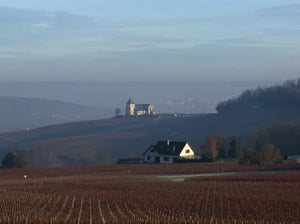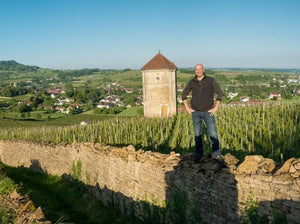Blog » Sparkling
-
House Champagne Hero: J. Lassalle
Champagne from the grower-producers is better than ever. The writing was on the wall when I was living in France in 2012, and it felt like a sea change was underway––I was probably late to notice, but still, names like Agrapart and Chartogne-Taillet became part of my weekly hauls from the local shops in Beaune. One of the names that I was introduced to early on was J. Lassalle. And, though their entry-level pricing has remained astonishingly low at $40, all their champagnes punch well above their price point.
The rosé champagne is a wine that holds a special place in my heart within its category. The pale copper-hued stunner has perfect balance and expertly judged ripeness and dosage. However, I'd be remiss if I didn't use this time to talk more in-depth about the Cachet d'Or 1er Cru Brut Réserve––at $40, it's the most obvious price anomaly in the world of grower-champagne. Aged for three years on lees before disgorgement, it carries both the rich brioche notes you'd desire, with all the finely-woven chalky minerality that is a prereq to go hand-in-hand with the more recognized grower names that sell for double the price. The blend is as classic as the style––equal parts Pinot Noir, Pinot Meunier, and Chardonnay, all from 50+-year-old vines in Premier Cru villages in the Montagne de Reims.
In 1982, after founder Jules Lassalle's passing, his wife, Olga, and their daughter, Chantal, took the reins. In 2006, Chantal's daughter, Angéline, took over as winemaker. "Une femme, un esprit, un style" (one woman, one spirit, one style). The inimitable Kermit Lynch has imported J. Lassalle for over 50 years––the longest relationship in his portfolio of legendary names. -
Sta. Rita Hills Sensation: Sandhi Blanc de Blancs
Value aside, Sandhi's 2016 Blanc de Blancs ($36) is the most delicious sparkling wine produced in America today. Full stop. While certainly not defined by citrus and green apple notes of the classic category mold, this 100% Chardonnay is analogous to drinking 20-year-old champagne in its prime with a sprinkle of hazelnut. Deep golden fruit with faint, waxy butterscotch tones and a finish that puts the exclamation point on the fact this is the apex of what extended-aged California sparkling wine can do.
Sashi Moorman and Rajat Parr's 2016 was sourced from arguably the central coast's most heralded single plot of vines––own-rooted, 1971-planted Sanford & Benedict Chardonnay. After fermentation in neutral oak, the wine spent forty months sur lie (on the lees) in bottle with zero dosage. Then, five years aging in bottle post-disgorgement in the Sandhi cellars of Lompoc.
When we tasted it, I was sure the price for such a multidimensional sparkler with so much aging would be around $80. I was shocked to learn we could offer single bottles at just $36. With holiday season in full bloom, this wine leaves the most significant impact at the most palatable price. Do not miss it! -
Pinot Meunier Whisperer: Laherte Freres
Tucked between the Côte de Blancs and the Vallée de la Marne, Aurélian Laherte has almost single-handedly put the tiny Côteaux Sud d’Epernay on the map with his truly singular and brilliant work focusing on Pinot Meunier.
This 1889-founded domaine has followed an organic and biodynamic path since Aurelian took the reins in 2005. He opts for old Burgundy barrels, partially or fully blocks malolactic fermentation, and keeps dosage between very low to zero, giving wines with body and texture but a precise and saline-driven mineral backbone—a combo that really appeals to me.
Laherte's Ultradition Extra Brut has been a house champagne for us for many years. Now, the secret is out, and we’re limited to as few as 12 bottles a year. At $53, the value cannot be overstated. There's also the micro-production cuvées from single parcels that are off the charts. -
Stéphane Tissot's Jurassic Bubbles
There's no producer in the Jura that executes brilliance across such a diverse range of wines and styles like that of Stéphane Tissot. And, "BBF" is the sparkling white from the Jura that you've always wanted to find in your glass. As a category, Cremant du Jura can be delicious and pleasing but rarely would take your mind to Champagne. BBF delivers here.
The name is a play on the use of 228-liter barrels for elévage, Blanc de Blancs élevé en Fût. Where this benchmark Cremant du Jura diverges from champagne is in its faint nutty aromas, baking spices, and ripe tropical notes. However, the structure is as serious as much of what you are to find from the Aube, with even more salinity and razor-fine cut reminiscent of the Côte de Blancs.
Tissot took control of his family's domaine in 1990 and worked very quickly to drastically reduce yields and convert the vineyards to organic and biodynamic viticulture. Today, Stéphane is seen as one of the world's most respected and prominent voices on the subject.
Tissot's Chardonnays each have that unmistakable reductive, flinty note that's often referred to as Noble Reduction. If you're a fan of the wines of Jean-Marc Roulot and Coche-Dury in Meursault, this distinctive smokey and matchstick trait, at its best, adds mesmerizing personality to Chardonnay.
.svg?v=162776257677185172071724397232)






